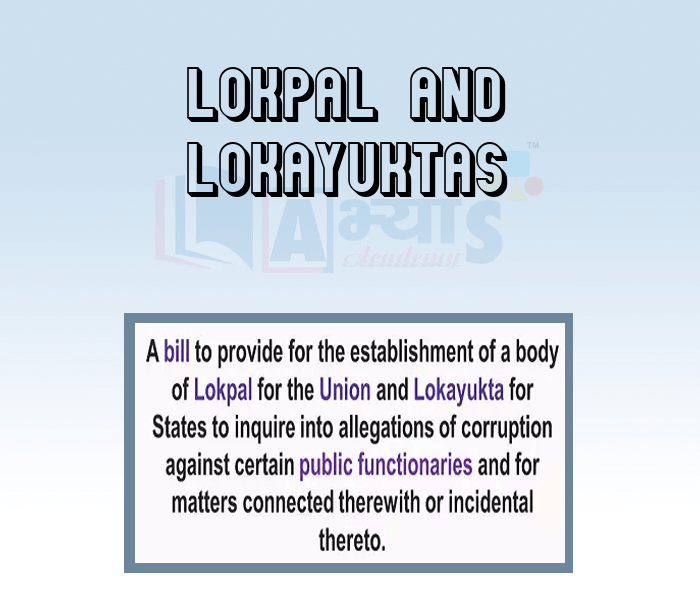Lokpal and Lokayuktas











Lokpal and Lokayuktas
Which of the following are correct : (a) In most states, the tenure of Lokayuktas is fixed till the age of 70 years or 5 years, whichever is earlier. (b) The Lokayukta will be appointed in every State which looks into the complaints against special higher officials in the States. (c) The tenure of Lokpal is -5 years or 65 years of age whichever is earlier. | |||
| Right Option : B | |||
| View Explanation | |||
Lokpal and Lokayukta Bill was passed by the Rajya Sabha on 17 December 2013 and Lok Sabha on 18 December 2013. It came into force as law from 1 January 2014, following the signature of President ______________________ | |||
| Right Option : C | |||
| View Explanation | |||
Which of the following are correct : (a) The Lokpal and Lokayukta Act, 2013 allows the formation of an Anti-corruption Watchdog Committee. (b) In Finland in 1920, Denmark in 1999, Norway in 1942 and Britain in 1967, the Ombudsman was established to end corruption. | |||
| Right Option : A | |||
| View Explanation | |||
Students / Parents Reviews [10]
It has a great methodology. Students here can get analysis to their test quickly.We can learn easily through PPTs and the testing methods are good. We know that where we have to practice

Barkha Arora
10thOne of the best institutes to develope a child interest in studies.Provides SST and English knowledge also unlike other institutes. Teachers are co operative and friendly online tests andPPT develope practical knowledge also.

Aman Kumar Shrivastava
10thAbhyas Methodology is very good. It is based on according to student and each child manages accordingly to its properly. Methodology has improved the abilities of students to shine them in future.

Manish Kumar
10thMy experience with Abhyas is very good. I have learnt many things here like vedic maths and reasoning also. Teachers here first take our doubts and then there are assignments to verify our weak points.

Shivam Rana
7thBeing a parent, I saw my daughter improvement in her studies by seeing a good result in all day to day compititive exam TMO, NSO, IEO etc and as well as studies. I have got a fruitful result from my daughter.

Prisha Gupta
8thAbout Abhyas metholodology the teachers are very nice and hardworking toward students.The Centre Head Mrs Anu Sethi is also a brilliant teacher.Abhyas has taught me how to overcome problems and has always taken my doubts and suppoeted me.

Shreya Shrivastava
8thA marvelous experience with Abhyas. I am glad to share that my ward has achieved more than enough at the Ambala ABHYAS centre. Years have passed on and more and more he has gained. May the centre flourish and develop day by day by the grace of God.

Archit Segal
7thMy experience was very good with Abhyas academy. I am studying here from 6th class and I am satisfied by its results in my life. I improved a lot here ahead of school syllabus.

Ayan Ghosh
8thAbhyas is a complete education Institute. Here extreme care is taken by teacher with the help of regular exam. Extra classes also conducted by the institute, if the student is weak.

Om Umang
10thIt was good as the experience because as we had come here we had been improved in a such envirnment created here.Extra is taught which is beneficial for future.
